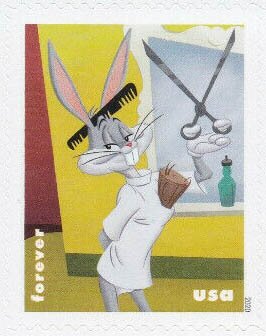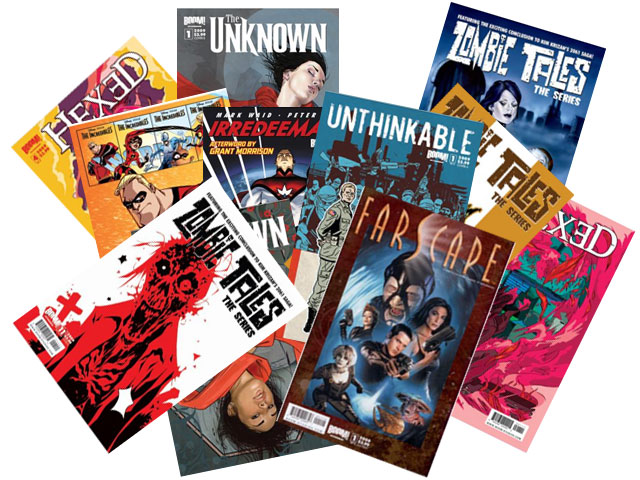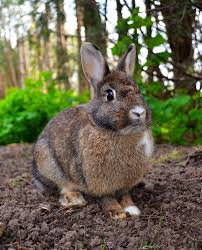Se-tenant: Bugs Bunny as Barber (United States of America 2020)
Bugs Bunny as Barber (United States of America 2020)
27 July (United States of America ) within release Bugs Bunny, 80th Anniversary goes into circulation Se-tenant Bugs Bunny as Barber face value FOREVER No Face Value
| Se-tenant Bugs Bunny as Barber in catalogues | |
|---|---|
| Stamp Number: | Sn: US 5494 |
Se-tenant is vertical format.
stamp from se-tenant block of 10Also in the issue Bugs Bunny, 80th Anniversary:
- Se-tenant - Bugs Bunny as Barber face value FOREVER;
- Se-tenant - Bugs Bunny as Basketball Player face value FOREVER;
- Se-tenant - Bugs Bunny as Wealthy Actor face value FOREVER;
- Se-tenant - Bugs Bunny as Jester face value FOREVER;
- Stamp - Bugs Bunny as Brunhilde face value FOREVER;
- Stamp - Bugs Bunny as Mermaid face value FOREVER;
- Stamp - Bugs Bunny as Concert Pianist face value FOREVER;
- Stamp - Bugs Bunny as Superhero face value FOREVER;
- Stamp - Bugs Bunny as Baseball Player face value FOREVER;
- Stamp - Bugs Bunny as Soldier face value FOREVER;
- Se-tenant - Bugs Bunny, 80th Anniversary face value 10*FOREVER;
- Mini Sheet - Bugs Bunny, 80th Anniversary face value 20*FOREVER;
Se-tenant Bugs Bunny as Barber it reflects the thematic directions:
A cartoon is a type of visual art that is typically drawn, frequently animated, in an unrealistic or semi-realistic style. The specific meaning has evolved, but the modern usage usually refers to either: an image or series of images intended for satire, caricature, or humor; or a motion picture that relies on a sequence of illustrations for its animation. Someone who creates cartoons in the first sense is called a cartoonist, and in the second sense they are usually called an animator.
The concept originated in the Middle Ages, and first described a preparatory drawing for a piece of art, such as a painting, fresco, tapestry, or stained glass window. In the 19th century, beginning in Punch magazine in 1843, cartoon came to refer – ironically at first – to humorous artworks in magazines and newspapers. Then it also was used for political cartoons and comic strips. When the medium developed, in the early 20th century, it began to refer to animated films that resembled print cartoons.
Comics are a medium used to express ideas with images, often combined with text or other visual information. It typically takes the form of a sequence of panels of images. Textual devices such as speech balloons, captions, and onomatopoeia can indicate dialogue, narration, sound effects, or other information. There is no consensus among theorists and historians on a definition of comics; some emphasize the combination of images and text, some sequentiality or other image relations, and others historical aspects such as mass reproduction or the use of recurring characters. Cartooning and other forms of illustration are the most common image-making means in comics; Photo comics is a form that uses photographic images. Common forms include comic strips, editorial and gag cartoons, and comic books. Since the late 20th century, bound volumes such as graphic novels, comic albums, and tankōbon have become increasingly common, along with webcomics as well as scientific/medical comics
Cosmetics are substances that are intended for application to the body for cleansing, beautifying, promoting attractiveness, or altering appearance. They are mixtures of chemical compounds derived from either natural sources or created synthetically. Cosmetics have various purposes, including personal and skin care. They can also be used to conceal blemishes and enhance natural features (such as the eyebrows and eyelashes). Makeup can also add colour to a person's face, enhance a person's features or change the appearance of the face entirely to resemble a different person, creature, or object
Rabbits are small mammals in the family Leporidae (which also includes the hares), which is in the order Lagomorpha (which also includes pikas). The European rabbit, Oryctolagus cuniculus is the ancestor of the world's hundreds of breeds of domestic rabbit. Sylvilagus includes 13 wild rabbit species, among them the seven types of cottontail. The European rabbit, which has been introduced on every continent except Antarctica, is familiar throughout the world as a wild prey animal, a domesticated form of livestock and a pet. With its widespread effect on ecologies and cultures, in many areas of the world, the rabbit is a part of daily life – as food, clothing, a companion, and a source of artistic inspiration.



